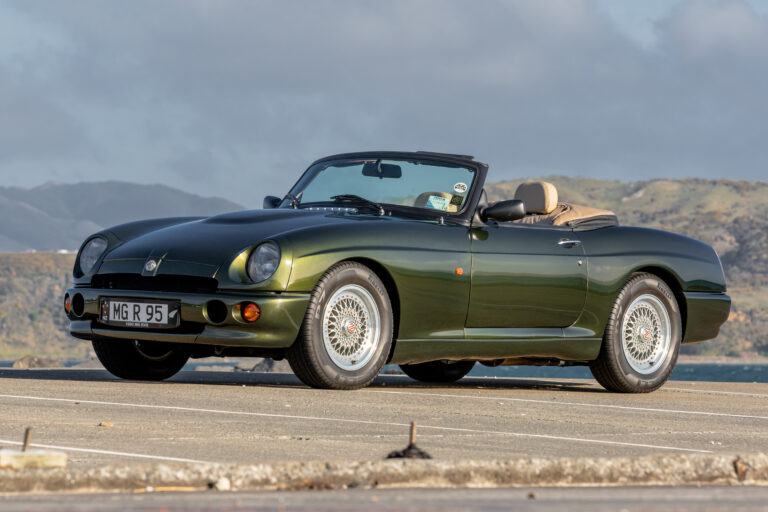In his classic Mini restoration, young Ben Leathwick found new friends, new interests, and went on more than one journey of discovery
By Quinton Taylor, photography Quinton Taylor and Rebecca Dore
Ben Leathwick had a mental picture of his ideal Mini, but the final result has gone beyond what he originally conceived, thanks to some good old-fashioned determination and the help of new friends and other Mini fans.
Like many people in their teens, Ben liked cars, but also like others of his generation he wasn’t in a burning hurry to get out on the open road himself. I bet most New Zealand Classic Car readers, as 15-year-olds, couldn’t wait to get down to the driver testing office to sit the test and then get behind the wheel. In Ben’s case, he was 19 before he acquired his restricted licence, and a passion for cars doesn’t run in the family, so it’s all the more encouraging to see him find the energy and commitment to take on and complete a car restoration.
“I guess I never had the confidence earlier. I had my restricted licence until I was 24,” says Ben, now 26. “We still have my first car, a Mitsubishi, which used to be my dad’s car. He has now got that back.” Ben’s daily-driver is a 2004 Ford Falcon.

A suitable mini challenge
Living in Southland, Ben could take his time building his driving skills and confidence on the region’s uncluttered open roads during a country commute to his work outside of Invercargill.
It also gave him time to think what he might turn his hand to in the way of a project. Ben always liked the original Minis: “I’ve just always liked older cars. Even people who don’t know much about cars know about a Mini, and everyone has a story to tell about one.”
But he wanted the end result to be something special, something uniquely his own.
The first consideration was cost. Even though it’s small, a Mini still has a lot of parts that can add up to a substantial sum. Then considering the cost of panel work and paint, the basic car had to be reasonably sound. Secondly, Ben’s mechanical knowledge was fairly limited, a serious consideration when it came to contemplating how he was going to achieve his aim, but here the Mini’s simplicity also helped.
He looked at a number of Minis of different models, dismissing even those he liked if they needed too much work. His experiences on the test drives assured him he was on the right track.
“I just loved my one when I drove it. It was like a road-legal go-kart,” he says with a large grin.
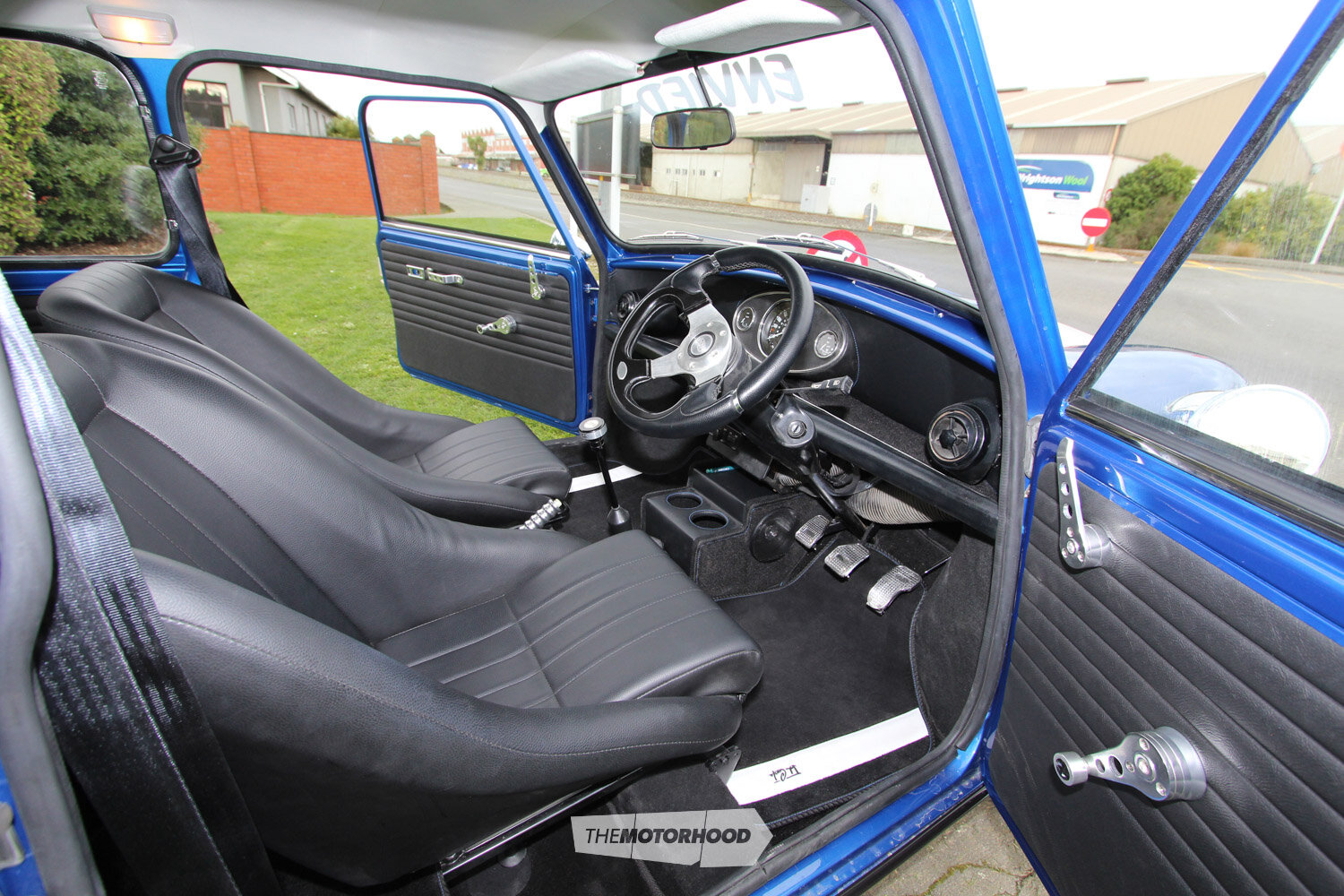
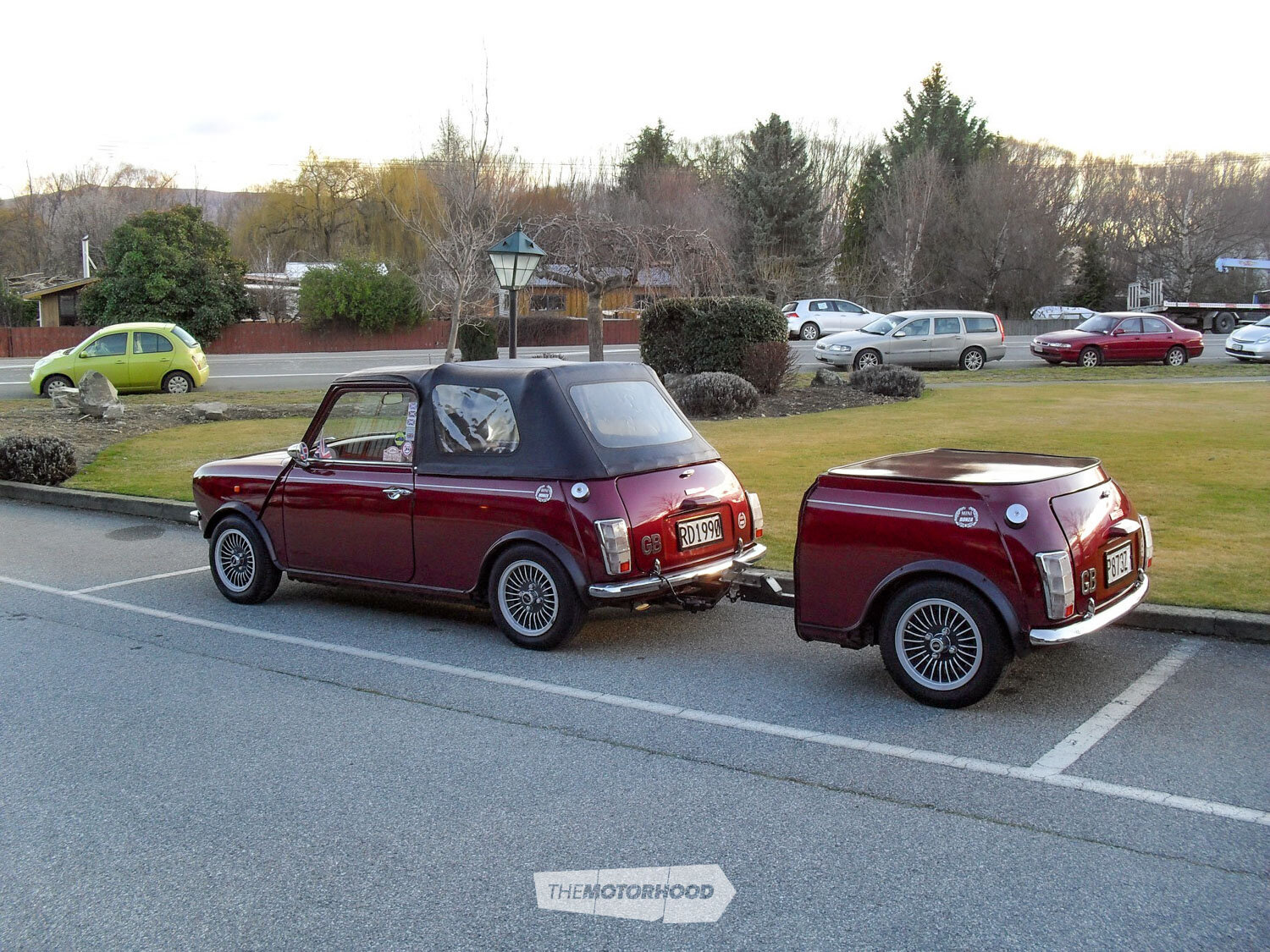
Close to home
He found it two years ago residing in Otatara, on the outskirts of Invercargill. It came with its original sales book, which showed it had been sold new to someone just a few blocks away from his home in Invercargill.
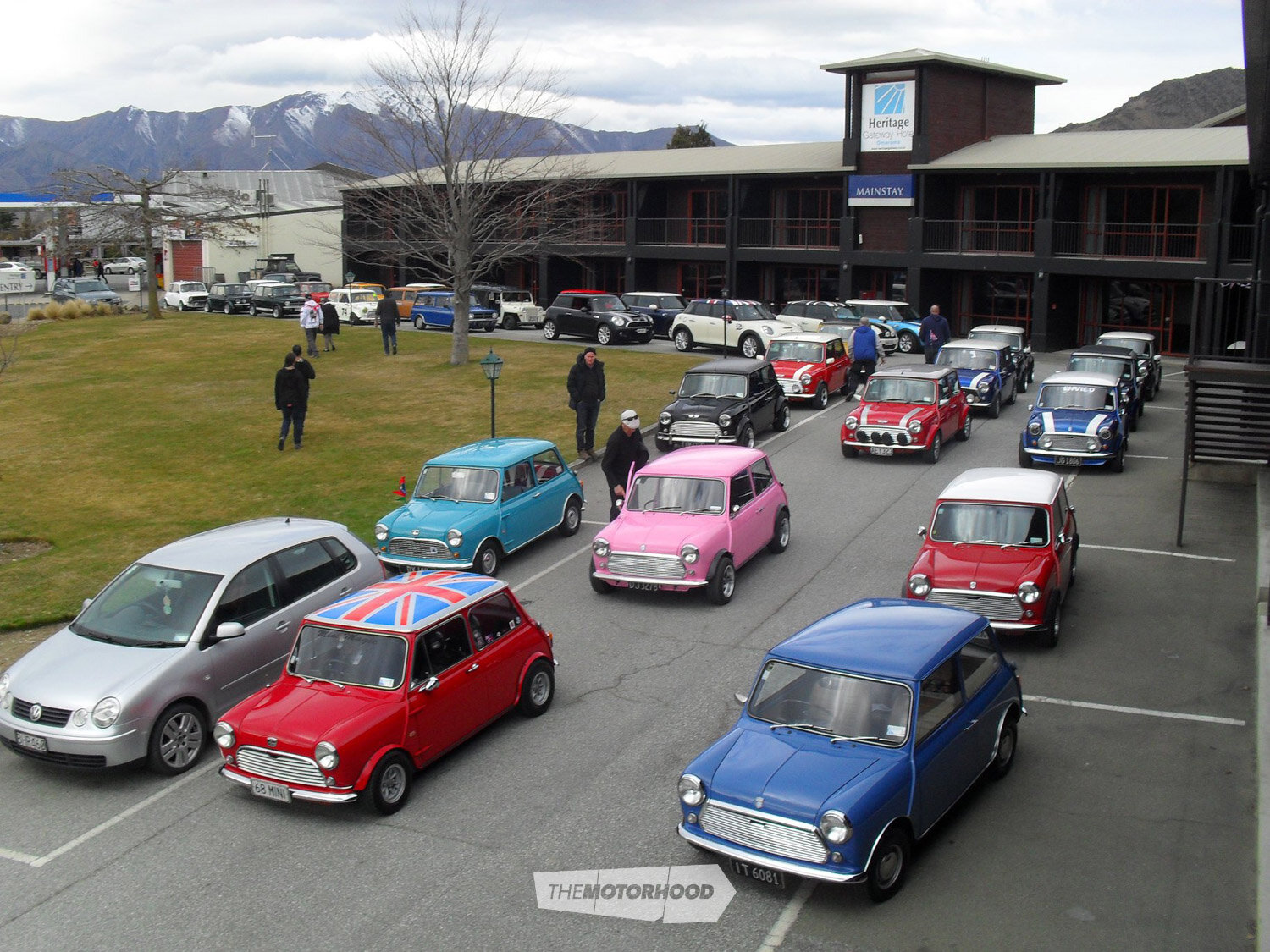
“It was pleasing to see it had been in Invercargill all its life. It was a 1979 Leyland Mini 1000, sold new in Invercargill from the New Zealand Motor Corp on 17 August 1979. It was originally sold in the colour of Bold as Brass. Way too bright for my liking.”
When he bought the car it was painted in Toyota Altezza Blue, but that too would change. The Mini had served a total of nine owners, including car sales yards, and although it looked in pretty good shape there were a few areas that would need attention.
“It obviously needed an engine rebuild. It was blowing a bit of blue smoke. Both door skins were shot, and the insides of the doors were full of leaves, as trim was missing off the window sills. They were quite rusty, but it turned out it just needed new door skins. A bit of work was needed to fix those.”
Rust was also making its presence known in the usual Mini areas of body seams, the bonnet, roof gutters, and other small places. But it was nothing major and was all forgivable because now it was Ben’s Mini. He loved it!
“It had Falken tyres fitted on Speedy alloy wires, a bit like the old Hot Wires, and it went OK,” he recalls. “It was definitely in need of a motor rebuild, but I just drove it for the first six months.”
Then things started to get a little hot in the engine department. Ben realized the radiator was shot, so it was time to make some serious decisions and get on with the job.
The great big Mini world
“I joined the New Zealand Mini Owners Club on Facebook, and I’ve had a lot of help from club organizer Josh Kelly in Dunedin,” Ben says.
It was also at this time that Ben came into contact with a person who could hardly be better qualified to shepherd him through the restoration process.: “The panel work was all done by Neil Jefcoate, who had recently retired. He doesn’t live far away. My mum works with his wife, and he said he could do the work for me. We stored the Mini out at his place the whole time, ripped it to bits, and went from there. It was sandblasted back to bare metal, and we found a wee few holes in the boot but nothing major.”
They spent about 18 months on the car. “It was all rebuilt out at Neil’s, and I went out and helped him. I really wouldn’t have known where to start,” Ben says.
When it came time to apply the colours, he decided on a white roof with the main body colour in Toyota Tidal Blue. It would also have old-school twin speed stripes on the bonnet. There isn’t a nook or cranny that has been overlooked, and the final result, courtesy of Steve Wilson, at Southern Commercial Car Painters in Invercargill, is impressive.
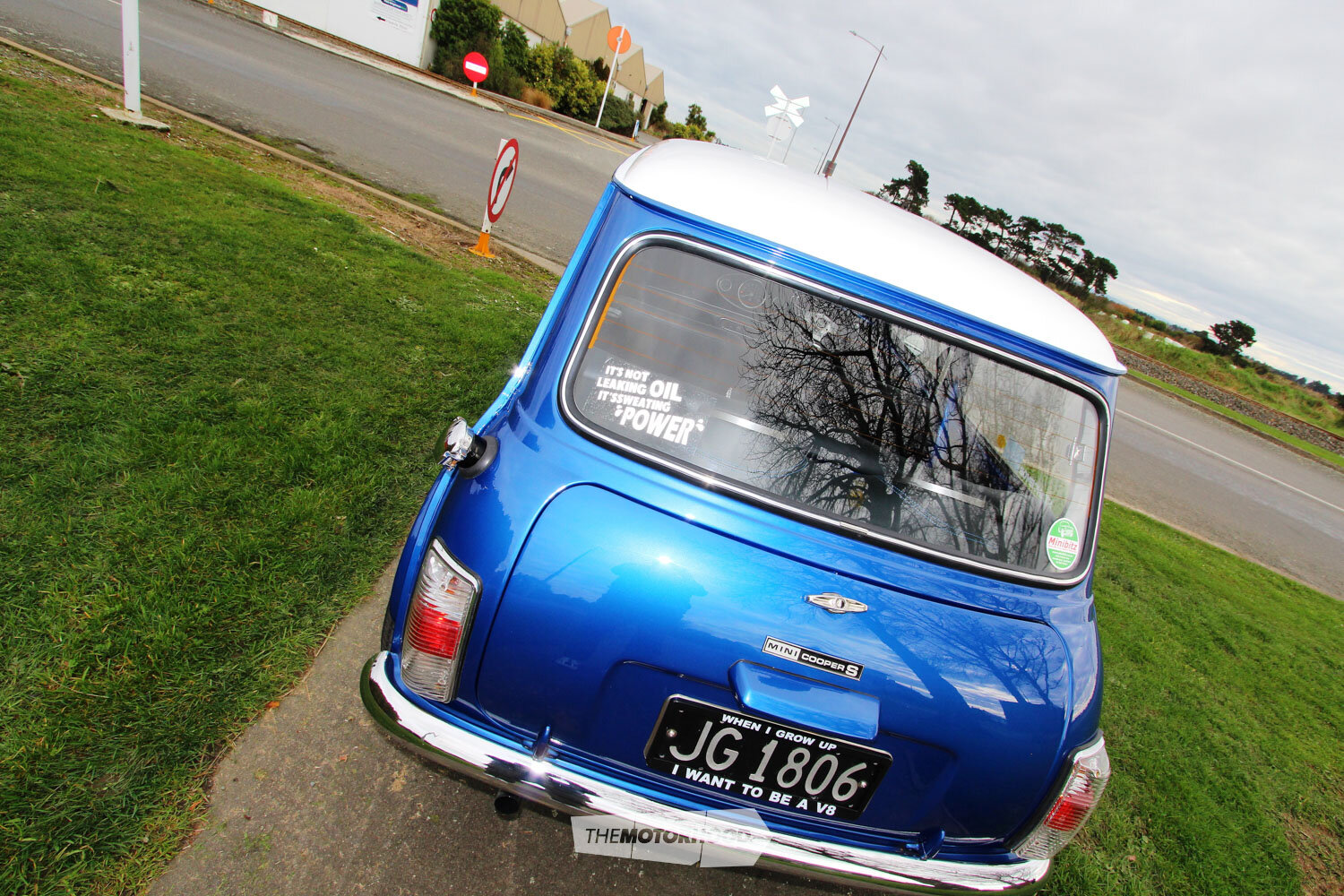
Along for the ride
The engine-reconditioning work was entrusted to long-time family friend Paul Hayes at Hayes Mechanical, and again the little Mini provided a couple of surprises.
Ben explains, “It wasn’t in too bad a shape internally. The motor needed new rings, pistons, and bearings, but it didn’t need to be re-bored, so everything is still standard. It came to $1500 for the engine, which wasn’t too bad.”
Ben followed Josh Kelly’s advice and contacted Lee Norman at Minibitz in Auckland for all his parts.
“Lee helped out a lot,” Ben says, “and I was surprised at how much is available in the way of all sorts of parts for Minis. It’s super easy to get parts for. I had a Swiftune SW-007 reground camshaft fitted and all the standard replacement pistons, valves, and bearings were supplied through Lee.”
Minibitz also came to the party when it came to rebuilding the Mini’s rubber-cone suspension. Perhaps you have seen English chef James Martin’s TV series exploring Britain in his beautifully restored Mini Cooper. If so, you will understand just how bouncy the ride can sometimes be — all part of the famous Mini character!
“All the rubber cones in mine were shot and as hard as rock. No bounce at all,” says Ben.
Minibitz came to the rescue again when he decided to upgrade the suspension and brakes with a bolt-on Spax conversion coilover shock-absorber kit. Fans say it improves the looks at all corners as well as lifting the ride quality immeasurably.
Out went the Falken tyres and Speedy alloys and on went a set of Minilite-like alloys, fitted with the recommended 165/45 X 10 Yokohama A008s and backed up with a suitable upgrade in the braking department.
“I fitted Cooper S seven-inch [178mm] disc brakes up front, replacing the drums on the front — I know seven inches doesn’t sound very big when you say it like that,” he says, but it works. “The suspension rides a lot better than it used to.”
The interior came in for a lot of attention. It now sports new leather race-style bucket seats with the rears covered to match. The interior trim is in dark-grey vinyl with blue stitching to match the body colour. This work was completed at Invercargill’s Suite Southern Designs Ltd. A new roof lining, carpets, and boot pieces complete the fit-out. It was then finished with some fancy foot-pedals, door handles, and window-winders, making it a more comfortable and inviting interior than the spartan original.
Legal hurdles
When the time came to get the Mini road legal, Ben ran into a couple of small issues, which meant he missed taking part in last year’s Pork Pie Charity Run from Kaitaia to Invercargill and some of the Mini’s 60th anniversary celebrations.
“I was going to put it on a transporter from here to Auckland to be stored at Lee’s place, but I missed out on that trip unfortunately,” Ben says.
The wider wheels meant wheel-arch flare add-ons were required. He found a solution in a set of four-wheel-drive wheel-arch extensions made of black nylon.
Then there was also a problem with the chassis numbers. An error had been made on the day it was first registered in 1979 when the chassis number was misread. Sorting out that paperwork took more time.

Now fully legal, Ben is enjoying driving his Mini. It looks very much like the Mini of the ’60s, with period touches such as the big front driving lights and old-school Speedwell bullet-type rear-vision mirrors on the doors. Then, of course, there are those white stripes standing out on that brilliant blue background. And the windscreen banner says it all.
The car’s first big trip was to the 2019 Mainland Mini Muster, which the Otago Mini Owners Club organized at Omarama in August to celebrate the Mini’s 60th anniversary.
The muster headed to Aoraki/Mount Cook for a run, and a public display in Omarama provided a variety of around 30 different types of old and new Minis, including a Mini Moke and an original Mini convertible with its own Mini trailer.

Reliable rewards
Ben was thrilled that his months of careful restoration had been so thorough.
“The Mini ran well and never missed a beat the whole weekend. We did 1000km in three days so the speedo has gone from 400km to 1400km very quickly,” he says.
Then it was off to Dunedin for the 2017 New Zealand Mini Owners’ ‘Italian Job’ club display at Autospectacular.
“That was the first ever car show I’ve had a car in. There was a red car, one white one, and a van with all the gold in it, and a wee police car as well. Josh has done well with that club. I think we have 3000 members now.”
Ben also caught up with Minibitz owner Lee Norman, meeting him in person at the finish of the Pork Pie Charity Run to Invercargill.
Ben looks back on his project with considerable pride. His dedication has paid off with an impressive result and the ongoing enjoyment of Mini’s unique fun factor. Mildly tuned, he has gone for economy, safety, comfort, and reliability, along with a touch of lively performance. Given the world’s long-term love affair with this car and good parts supply, it is surely a car which will be usable for some years to come. Just as well given the effort, and yes, the cash Ben has sunk into it.
“There’s probably [been] $40K to $45K spent getting it back on the road,” says Ben. “It was worth it — I love it! I still get a bit anxious though pulling up at the lights next to one of those big logging trucks. I always hope they can see me.”
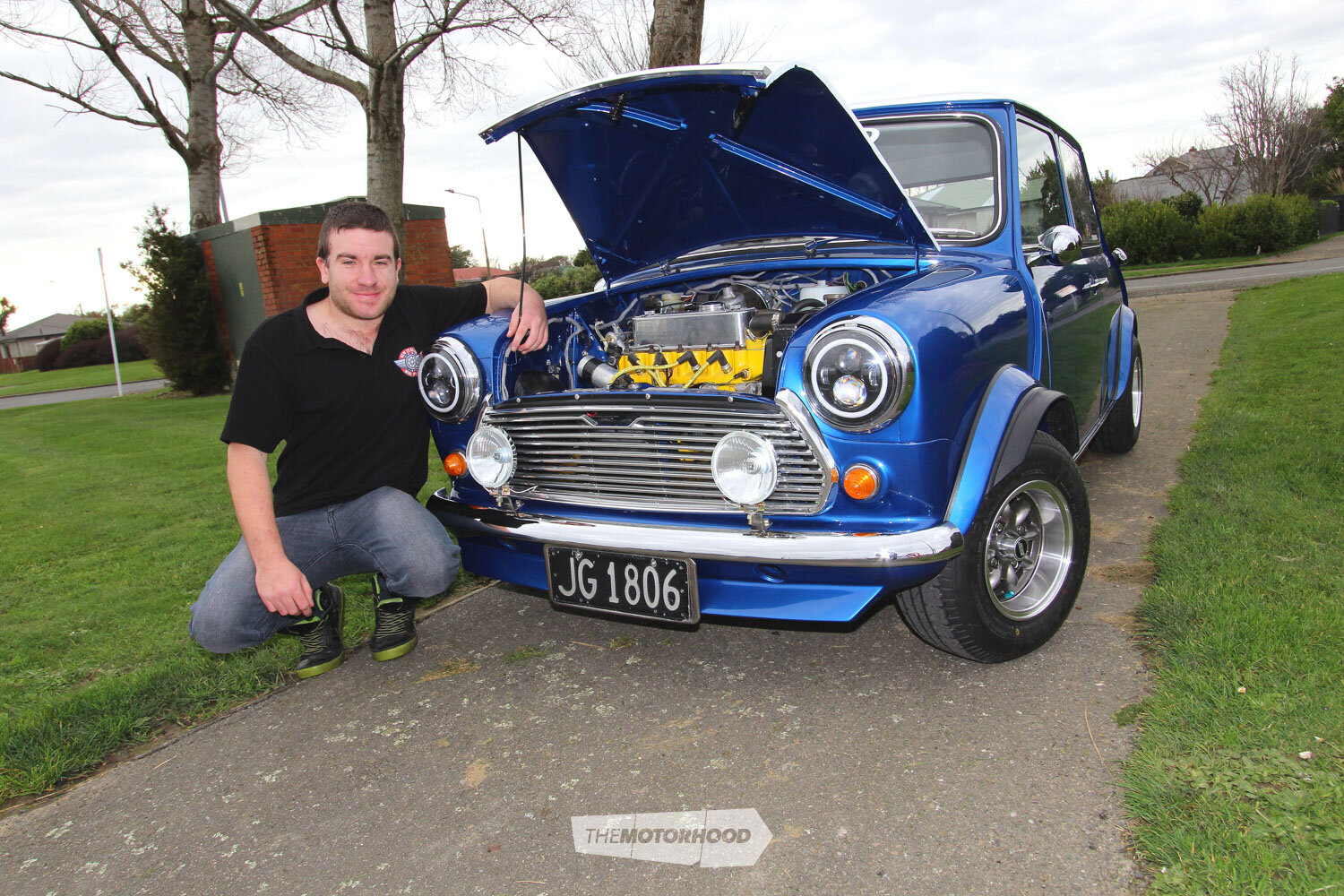
This article originally appeared in New Zealand Classic Car issue No. 355


